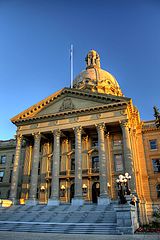 In December 2011, the Legislative Assembly of Alberta passed the Traffic Safety Amendment Act, 2011 (the “Act”), which increased penalties for impaired drivers in Alberta. These changes were then incorporated into the Alberta Traffic Safety Act, and some of those changes recently came into effect.
In December 2011, the Legislative Assembly of Alberta passed the Traffic Safety Amendment Act, 2011 (the “Act”), which increased penalties for impaired drivers in Alberta. These changes were then incorporated into the Alberta Traffic Safety Act, and some of those changes recently came into effect.
In brief, the Act introduced progressive penalties for drivers with blood alcohol concentrations (“BAC”) of .05 or greater; added tougher penalties for drivers with BACs of over .08; and established a stronger zero tolerance policy for new drivers. In many ways, these changes are similar to changes that were introduced in British Columbia a few years ago.
Let’s look at some of the differences in a bit more detail.
Under the old law, Alberta drivers caught with BACs of .05 or greater are subject to a 24-hour suspension. Under the new law (see s.88 of the Traffic Safety Act), starting September 1, 2012 these same drivers would be subject to the following:
- for first-time offenders, an immediate (i.e. roadside) 3-day licence suspension and a 3 day vehicle seizure;
- for a second offence, an immediate 15-day licence suspension and a 7-day vehicle seizure, and a mandatory remedial course (for which the driver must pay); and
- for third (and subsequent) offences, an immediate 30-day suspension and 7-day vehicle seizure for third, a remedial course, and a mandatory review by the Alberta Transportation Safety Board.
Under the old law, Alberta drivers caught with BACs of .08 or greater faced criminal charges and the possibility of having to install a device in their car that tests the driver’s breath and prevents the car from starting if it detects the presence of alcohol (the “ignition interlock”). The installation, removal and rental fee of the ignition interlock had to be paid for by the driver. The requirement for the ignition interlock was discretionary (i.e. it was up to the police to decide if that would or would not be a requirement). Under the new rules, drivers whose BACs are over .08:
- will continue to face criminal charges;
- will have their licences immediately suspended until the charges are resolved; and
- for a first conviction, will require the ignition interlock for 1 year, for a second conviction will require it for 3 years, and for a third conviction will require it for 5 years (all still at the driver’s expense).
Under the old law, new drivers were already required to maintain a BAC of zero. However, now tougher penalties are in place. Graduated drivers who arestopped with any blood alcohol level at all will receive an immediate 30-day licence suspension and 7-day vehicle seizure. In addition, each such 30-day suspension will require one additional year in the Graduated Licence Program.
Drivers who have been accused under these provisions may: request a second roadside breath test; and challenge these penalties by appealing to the Alberta Transportation Safety Board (ATSB) before their criminal trial. However, the license suspension remains in effect during any appeal process.
Although we can likely all agree that driving under the influence is a bad thing (no matter how much we might like MadMen) and that BAC-related motor-vehicle accidents are high, the interesting question here will be whether or not this law will last.
The problem? Well – that pesky constitution of ours again!
Just for fun, let’s take a look at two sections that might come into play.
- Some might argue that the new rules are “criminal” in nature and that, therefore, the provincial government has no right to pass such laws (criminal laws are in the federal jurisdiction – s.91(27) of the Constitution Act, 1867). This argument was attempted in British Columbia after it passed similar legislation. Although the British Columbia Supreme Court found that the provisions in question were not outside the jurisdiction of the province (see Sivia v British Columbia (Superintendent of Motor Vehicles), “Sivia”), an Alberta court might not make the same finding (as always, the devil is in the details!);
- Section 11(d) of the Canadian Charter of Rights and Freedoms provides that: “any person charged with an offence has the right […] to be presumed innocent until proven guilty according to law in a fair and public hearing by an independent and impartial tribunal”. In the original law discussed in Sivia, it was not possible for the results of the roadside screening device to be challenged. That has since been changes, and, as noted above, the Alberta rules do provide for an appeal to the ATSB). However, that appeal could take longer that the suspension itself (especially for first-time offenders). The question therefore, is whether that is enough of an appeal mechanism to satisfy s.11(d) of the Charter. In addition, some might argue that that the indefinite license suspension means that more people will simply plead guilty right away so they can get their license back.
Whoever said the constitution wasn’t interesting?
For more information about the new rules, see the information provided on the Alberta Transportation website.
For more information on the constitutional implications, please see this article by the University of Alberta’s Centre of Constitutional Studies.
